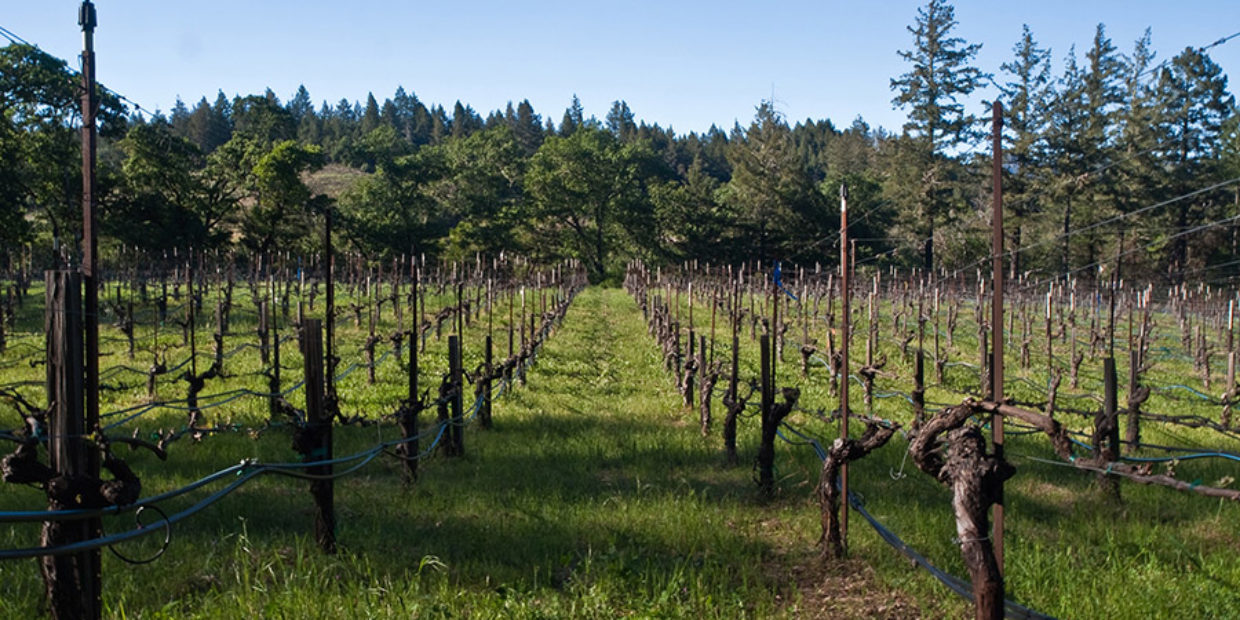Cabernet Franc 2013

The Story Of Dyer Vineyard Cabernet Franc – Was It A Good Idea?
So How Did Dyer Vineyards, Known For Their Estate Cabernet Sauvignon, End Up With A Couple Barrels Of 2013 Dyer Cabernet Franc?
The 2013 Dyer Vineyard Cabernet Franc is a first for Dyer. For 17 years Bill and Dawnine Dyer made one wine from their Diamond Mountain Vineyard – a Cabernet Sauvignon Bordeaux styled blend. Cabernet Franc and Petit Verdot were grown only as supporting players. The focus was on the nuance and complexity that they bring to the Dyer Estate Cabernet.
About a decade ago Bill and Dawnine Dyer discovered that on their well-drained, volcanic site, Cabernet Franc was superior to both Merlot or Malbec and enthusiastically made it the lead blending variety in their blend.
So What Happened In 2013 To Move Cabernet Franc From A Blending Varietal To A Stand-Alone?

In 2013 they co-fermented the three varieties as usual, but had a little Cab Franc left over which they fermented separately. As Bill Dyer says- “We’ve shared it with a few of our clients while it was in the barrel and watched their eyes light up when they tasted it, so we decided to bottle it.” Was it a good idea? Well we thought so, but most recently we received this endorsement of this decision from Antonio Galloni in VINOUS.”
One of the great wines of this vintage, Dyer’s 2013 Cabernet Franc is arguably even more impressive than the Cabernet Sauvignon. Veins of tannin and acidity perk up the flavors nicely. Delineated, powerful and structured, the 2013 delivers superb intensity. Sage, menthol, rosemary and licorice add shades of nuance on the deep, resonant finish.” – 95 pts. Anthony Galloni, Vinous
Want To Know More About Cabernet Franc?
Cabernet Franc is one of the major black grape varieties worldwide. It is principally grown for blending with Cabernet Sauvignon and Merlot in Bordeaux style wines and is a major variety in right bank Bordeaux, specifically St Emilion, Pomerol and Fronsac. It is vinified alone in the Loire’s Chinon. In California it is primarily a blending variety but is finding increasing acceptance as a stand-alone variety, especially when grown in well drained soils where ripeness is easily obtained.
Cabernet Franc is lighter than Cabernet Sauvignon, making a bright pale red wine that contributes finesse and lends a peppery perfume to blends with more robust grapes. Depending on the growing region and style of wine, additional aromas can include tobacco, raspberry, bell pepper, cassis, and violets.
Records of Cabernet Franc in Bordeaux go back to the end of the 18th century, although it was planted in Loire long before that time. DNA analysis indicates that Cabernet Franc is one of two parents of Cabernet Sauvignon- the other being Sauvignon Blanc.
Cabernet Franc shares many of the same phenolic and aroma compounds as Cabernet Sauvignon but with some noticeable differences. Cabernet Franc tends to be more lightly pigmented while producing wines with the same level of intensity and richness. Cabernet Franc tends to have a more pronounced perfume with notes of raspberries, blackcurrants, violets and graphite. It has slightly less tannins than Cabernet Sauvignon and tends to produce a wine with a smoother mouthfeel.
Our first love will always be the Dyer Vineyard Cabernet Sauvignon, but we enjoy seeing this supporting actor in a leading role. Bill and Dawnine Dyer
